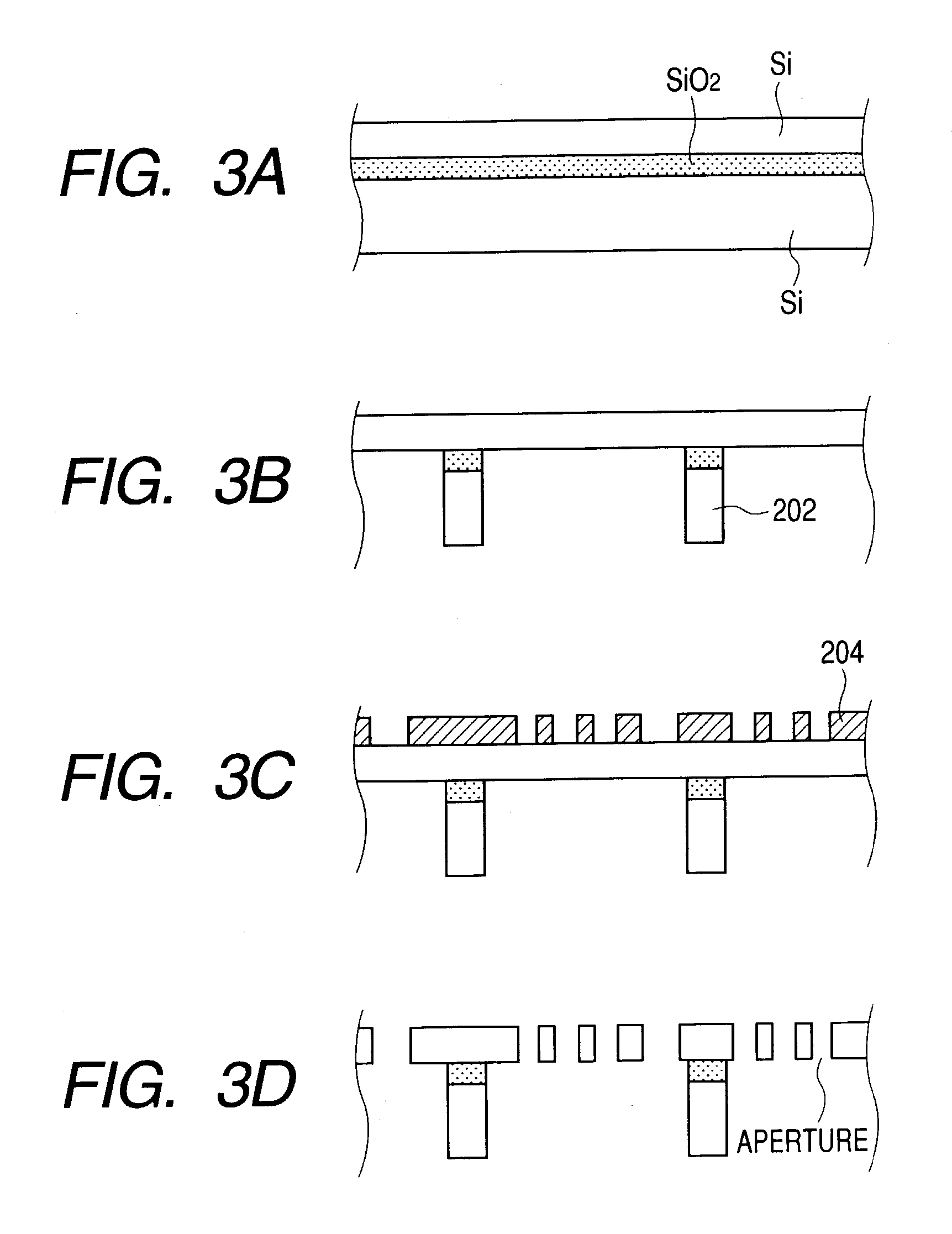Semiconductor device and manufacturing method thereof
a semiconductor and semiconductor technology, applied in the field of semiconductor devices, can solve the problems of insufficient aperture ratio, conventional problem, beam blur, etc., and achieve the effects of reducing the aperture ratio of the mask, high dimension accuracy, and improved resolution
- Summary
- Abstract
- Description
- Claims
- Application Information
AI Technical Summary
Benefits of technology
Problems solved by technology
Method used
Image
Examples
first embodiment
(First Embodiment)
[0051]Hereunder, the preferred embodiments of the present invention will be described with reference to the accompanying drawings. At first, a description will be made for the first embodiment, which is a method for dividing a mask complementarily to form some of the gate layer patterns with reference to FIGS. 1A, 1B, 1C-1 and 1C-2. The selected patterns that require specially high dimension accuracy are formed on an active layer.
[0052]FIGS. 1A, 1B, 1C-1 and 1C-2 show mask data of active regions 102 of a MOSLSI and gate patterns 101 formed on the active regions. In FIGS. 1A, 1B, 1C-1 and 1C-2, the gate patterns 101 on the active regions 102 are 0.08 μm and 0.12 μm in width. In a range up to at least at a portion separated by 0.15 μm from the active region, each gate pattern is laid out at the same width of the gate pattern on the active region 102 in consideration of the total errors of both gate layer and active region. In other regions, the gate patterns are laid...
second embodiment
(Second Embodiment)
[0058]This second embodiment describes a method for dividing a mask into complementary masks in consideration of the required accuracy of the gate patterns.
[0059]FIG. 7A shows gate patterns 701 and active region patterns 702. Each gate pattern 701 is drawn at the minimum pattern width of 0.1 μm and at the minimum pattern space of 0.16 μm. If both thick and thin gates co-exist, almost all the gates are located on active regions, and the mask is divided just like in the first embodiment, then the aperture of the mask that includes the patterns on the active regions becomes higher than those of other masks. To avoid this, the mask is divided into two complementary masks so that the aperture ratio of the mask that includes shorter gate patterns of those located on the active regions becomes lower. In other words, patterns having a width of a predetermined value or less and the edges of aperture patterns adjacent to those patterns at predetermined spaces or less are ex...
third embodiment
(Third Embodiment)
[0065]Next, a description will be made for the complementary mask division to be made when subfields are in the influential range of the Coulomb interaction with reference to the flowchart shown in FIG. 14. The patterns in the object layer are laid out at the minimum width of 0.8 μm and at the minimum spaces of 0.08 μm. In this connection, the aperture ratio of each subfield must be under 20% so as to meet the utilization condition of the electron beam projection equipment to realize the accuracy of 10 nm or less for patterns of not more than 0.1 μm width to be irradiated by the electron beam and not to be irradiated by the electron beam (hereinafter, to be referred to as fine patterns).
[0066]On a chip constituted by 6×6 subfields, the aperture ratio of each subfield is decided as shown in FIG. 16A. In FIGS. 16A, 16B-1, 16B-2, 16C-1, and 16C-2, each subfield whose aperture ratio value is encircled has an aperture ratio that exceeds 20%. On the other hand, each shad...
PUM
| Property | Measurement | Unit |
|---|---|---|
| thickness | aaaaa | aaaaa |
| thickness | aaaaa | aaaaa |
| thickness | aaaaa | aaaaa |
Abstract
Description
Claims
Application Information
 Login to View More
Login to View More - R&D
- Intellectual Property
- Life Sciences
- Materials
- Tech Scout
- Unparalleled Data Quality
- Higher Quality Content
- 60% Fewer Hallucinations
Browse by: Latest US Patents, China's latest patents, Technical Efficacy Thesaurus, Application Domain, Technology Topic, Popular Technical Reports.
© 2025 PatSnap. All rights reserved.Legal|Privacy policy|Modern Slavery Act Transparency Statement|Sitemap|About US| Contact US: help@patsnap.com



